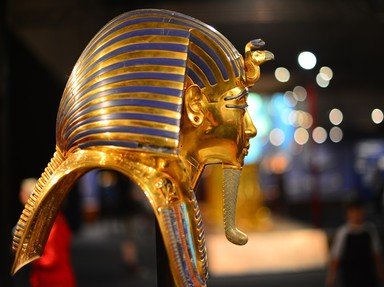Quiz Answer Key and Fun Facts
1. There was an unsuccessful harem conspiracy against Ramses III. There are quite full accounts of the trial. Who are listed as being among the 14 judges?
2. Ramses IV was the son of Ramses III. How many of the succeeding rulers also called Ramses were probably brothers of his?
3. What is it believed Ramses V suffered from?
4. Rivalry between the mayor of Thebes and the mayor of Western Thebes in the reign of Ramses IX led to what?
5. Who was the last king of the 20th Dynasty?
6. Was Pinedjem a Pharaoh?
7. How many kings were buried in the tomb of Psussenes I?
8. On what date did the archaeologist Pierre Montet find the tomb of Osorkon II?
9. What was the sarcophagus of Shoshenq III made of?
10. Iuput was one of how many Pharaohs ruling in various parts of Egypt who united in an attempt to repel the Nubians who were ruling in Nubia and Upper Egypt from Thebes.
Source: Author
tnrees
This quiz was reviewed by FunTrivia editor
bloomsby before going online.
Any errors found in FunTrivia content are routinely corrected through our feedback system.
